COVID-19: Use of Gloves in Non-Health Care Workplaces
According to the U.S. Centers for Disease Control and Prevention (CDC), COVID-19 is thought to spread mainly from person-to-person via respiratory droplets. Practicing physical distancing, proper hand hygiene, wearing a mask, avoiding crowded, poorly ventilated spaces and self-screening for symptoms continue to be prioritized as public health measures to prevent COVID-19 transmission. For the general public and for many workers in non-health care settings wearing gloves is not necessary. Workers should clearly understand the limitations and purpose of the gloves before they can be used in their workplaces.
Gloves are NOT NECESSARY for prevention of COVID-19 in non-health care workplaces.
According to the CDC, wearing gloves is recommended when you are cleaning/disinfecting or caring for someone who is sick (e.g., health care settings). In other situations, wearing gloves for prevention of COVID-19 is NOT NECESSARY for the following reasons:
- The human skin is an effective barrier against the viral infection. The virus is not absorbed through your hands. Therefore, you do not need another layer of protection on your hands.
- The virus adheres well to the materials of the gloves (e.g., latex, nitrile or vinyl). If you touch a surface contaminated with the COVID-19 virus, the gloves can be contaminated. If you then touch your face with the gloves on, the contamination goes from your gloves to your face and can infect you.
- Wearing gloves can mislead people into thinking this is enough to protect themselves from the virus. It can give people a false sense of security, as people tend to wash or sanitize their hands less frequently when they are wearing gloves.
- In health care settings, gloves are typically disposed of after every single interaction with suspected or confirmed COVID-19 patients. In non-health care settings, people often wear the same pair of gloves for touching various surfaces, including their phones. If one of the surfaces they touched is contaminated with virus, this may result in contaminating multiple surfaces, which may increase the risk of getting COVID-19 for you and others.
- The idea of washing hands with disposable gloves on or using a hand sanitizer on the gloves for disinfection may appeal to some workers. However, these practices are not recommended because washing can disrupt the integrity of the gloves, and the hand sanitizer is designed for use on the human skin, not on the materials of the gloves (e.g., latex or nitrile).
Wearing gloves should not be a replacement for practicing good hand hygiene (i.e., frequently wash your hands with soap and water for at least 20 seconds or use an alcohol-based hand sanitizer containing at least 60 percent alcohol).
Gloves CAN BE HELPFUL in certain situations if worn with appropriate precautions.
- When you are cleaning or disinfecting your work areas, follow Public Health’s guideline and the precautions listed on the product labels, which may include use of gloves in order to avoid your hands getting dried out or irritated.
- When required for the work, as previously assessed
- Wearing gloves might act as a reminder to touch fewer surfaces and refrain from touching your face.
- When required as part of Droplet and Contact Personal Protective Equipment (PPE).
If workers choose to wear the disposable gloves for protection against COVID-19, the following precautions are recommended:
- The workers should be reminded of the limitations of the gloves, described above in the section: “Gloves are NOT NECESSARY for prevention of COVID-19 in non-health care workplaces”.
- Hands should always be washed or sanitized prior to putting on the gloves and after taking them off. Instructions on how to take off gloves should be posted as recommended by Ontario Public Health and CDC. An instruction video by Public Health Agency of Canada (PHAC) is also available.
- The gloves should be changed when they become soiled or damaged.
- The workers should not touch their face with the gloves on.
- Disposable gloves should be thrown out and not used again once they have been taken off.
How to remove gloves (from CDC):
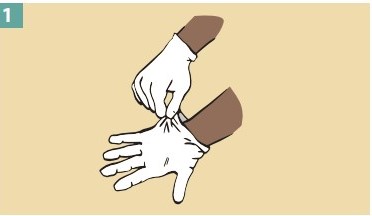
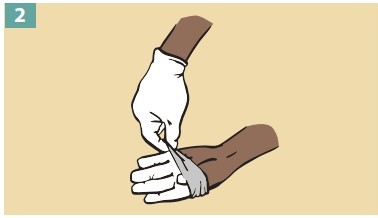
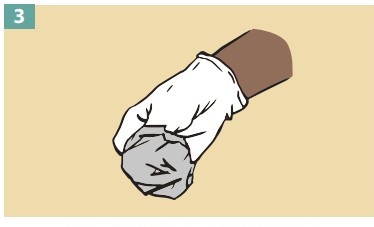
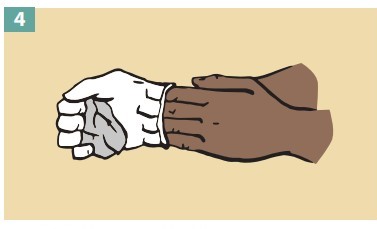
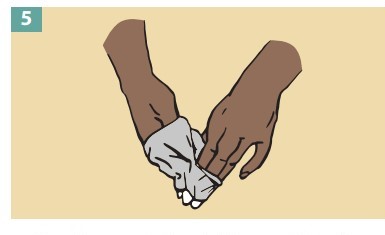
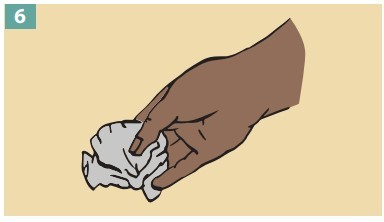
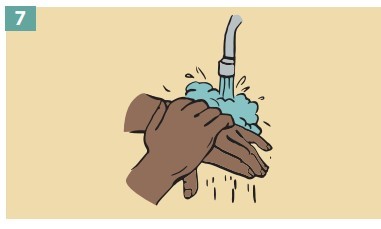
For any concerns or inquiries related to COVID-19 and working safely, please contact Environmental Health and Safety (EHS) at ehs@uoguelph.ca or Occupational Health and Wellness (OHW) at ohw@uoguelph.ca.


